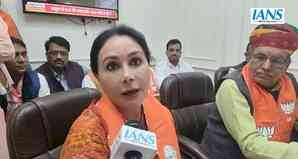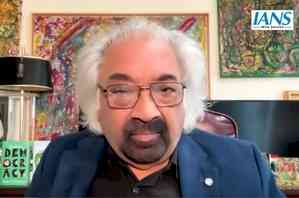Industry reaction to RBI Governor Shaktikanta Das announcement that Policy Repo Rate will remain unchanged at 4 per cent
Many industrial leaders thank the RBI for continuing with their accommodative stance

The Governor of the Reserve Bank of India, Shri Shaktikanta Das has announced that the Policy Repo Rate will remain unchanged at 4% and that the Marginal Standing Facility and Bank Rate will remain at 4.25%. The Reverse Repo Rate too will remain unchanged at 3.35%. He informed that Monetary Policy Committee was of the view that policy support from all sides is required to gain growth momentum and to nurture recovery after it takes root. “Hence policy rate has been left unchanged and accommodative stance has been decided to be continued as long as necessary to revive and sustain growth, while ensuring inflation remains within target” the Governor said while delivering RBI’s bi-monthly monetary policy statement through an online address.
Some reactions from the industry are as under:
Ch. S. S. Mallikarjuna Rao, MD & CEO, PNB
“The RBI has once again come out with proactive set of announcements to revive the economic growth amid surge in second wave of pandemic. The decision of keeping the repo rate unchanged along with maintenance of accommodative stance is on expected lines and necessary to mitigate the growth uncertainty and inflation concerns. Announcement of on tap liquidity facility of Rs 15,000 crore will ensure credit flow to the contact intensive sectors and MSMEs including hotels, tourism, aviation, etc. which have been adversely impacted. Further, resolution of stress of MSMEs has also been addressed through enhancement of exposure thresholds to Rs. 50 crore under resolution framework 2.0. Availability of NACH on all days of the week will further the financial inclusion objectives through Direct Benefit Transfer (DBT).”
Dinesh Khara, Chairman, SBI
“The policy announcements of the RBI are clearly focused on extending liquidity support to stressed sectors by a more equitable distribution. The growth and inflation numbers have been revised looking at the current uncertain environment. The policy announcements are unequivocal in supporting growth through liquidity and market interventions through Regional Rural Banks and also by fast tracking resolution of stressed MSME sector. Overall, the coordinated and active efforts of the RBI and Government will support growth on a more durable basis during these difficult times.”
Manish Patel, Founder and CEO, Mswipe
“RBI's move on extending Rs. 15,000 crore liquidity window for contact intensive sectors comes as a huge relief to MSMEs. The MSME sector has been adversely affected due to the second wave of the pandemic as they are experiencing shortage of working capital with cash flow drying up and abysmally low demand from consumers. While the lockdown-like restrictions will continue to impact hospitality industry, travel industry and beauty and salon segment for the coming months as well, merchants will continue to face revenue pressures. This move will help these sectors tide over the cash crunch and working capital issues.”
Harsh Vardhan Patodia, President, CREDAI National
“RBI continues to maintain an accommodative stance as it is crucial to mitigate the impact of COVID Pandemic. Focus on equitable distribution of liquidity is expected to solve the fund shortage crisis to an extent. Modifying the ECLGS scheme and clear instructions to banks & other financial institutions on sanctioning funds to labour intensive sectors like Real Estate is the need of the hour. Moratorium on principal & interest for 6 months and freezing of SMA classification for another year will aid revival of businesses and thus the economy. The impact of the second wave on large businesses which provide millions of livelihoods is a lot deeper than it appears. MSMEs are staying afloat with the much needed support from the Government. Growing retail inflation coupled with increasing unemployment rates call for immediate & drastic measure from the Central bank.”
A. K. Das, Managing Director & CEO, Bank of India
“Policy a fine balancing act between growth and inflationary expectations - Policy yet again proved to be a fine balancing act between growth and inflationary expectations. Expanding the scope of Covid 2.0 resolution framework coupled with the recent ECLGS modification is a welcome move to support the needy segments.”
Indranil Pan, Chief Economist – YES Bank
“As was expected, there were no change in the headline monetary policy rates as also the stance. In his statement, the Governor acknowledges the growth risks and now projects a lower real GDP growth for the year at 9.5%. Inflation projections have been raised too. Given the current evolution of the growth-inflation dynamics, there was absolutely no scope for the RBI to change its policy rates. Instead, the RBI endeavoured to keep the system fluid with adequate liquidity and also targeting rescue operations for the most stressed sectors in the economy. Consequently, a liquidity window was opened up for the contact intensive sectors that continue to totter with the burden of the pandemic. SIDBI was provided with a special liquidity facility to on-lend to MSMEs, specially the smaller ones. To enable the government to borrow at attractive rates, another round of bond buying was announced under G-SAP 1.0 while a G-SAP 2.0 was announced. We think that over the current FY, the RBI will not have any leeway to change its interest rates to provide support to the economy. Instead, it will do whatever necessary to push credit and liquidity to the stressed areas of the economy so as to prevent erosion of the supply chains in the economy.”
Umesh Revankar, Vice Chairman & MD, Shriram Transport Finance
“RBI’s monetary policy today was along expected lines with status quo on rates and continued accommodative stance. While the central bank acknowledged that the spread of Covid-19’s second wave into rural areas had brought forth downside risks and a slight reduction in GDP estimates for the year, the forecast of a normal monsoon bodes well for pickup in demand indicators going ahead. In continuation of a slew of measures taken by RBI since the start of the pandemic to better mitigate its impact on businesses & economy, there were additional ones announced today such as a separate liquidity window of Rs. 15,000 crore for certain contact-intensive sectors like supply chain, private bus operators, rent-a-car service providers, vehicle repair services among others. Such steps will keep liquidity abundant and financing conditions congenial necessary for preserving financial stability of all stakeholders.”
Anagha Deodhar – Chief Economist, ICICI Securities
“As expected, the MPC voted unanimously to keep repo rate unchanged and the stance of monetary policy ‘accommodative as long as necessary’. The decision to hold rates came on the back of a difficult backdrop of slowing growth are rising inflation. The MPC upped inflation forecast for better part of FY22 by 20-30bps and lowered GDP growth forecast sharply to 9.5%, mainly due to lower than expected growth in H1FY22. This shows that the committee’s priority is supporting growth recovery. The RBI also announced on-tap liquidity window of Rs 150bn for contact-intensive sectors, additional liquidity facility of Rs 160bn to SIDBI and enhanced the threshold for resolution. Moreover, it announced purchase of government securities worth Rs 1.2trn under GSAP 2.0 in Q2FY22. All these measures together are likely to keep financial conditions in the economy benign and support recovery.
Amar Ambani, Senior President and Head of Research – Institutional Equities, YES SECURITIES
With growth slowing and rise in inflationary pressures, RBI expectedly kept a status quo on the policy rates and maintained accommodative stance, signalling continuation of easy financial conditions. Downward revision in FY22 GDP growth projection to 9.5% was quite expected, but seems little optimistic when compared with consensus estimates. Nevertheless, RBI pursued its broad intent of plugging weak spots in the economy by providing on tap liquidity with additional lending to distressed and contact-sensitive sectors.
On inflation, the CPI projection of an average of 5.1% for FY22 looks credible as higher oil and commodity prices is leading to elevated price pressure. Though healthy monsoon and higher crop output may somewhat contain food inflation. Announcement of another round of G-SAP and devolvement of various bond auctions clearly convey RBI’s stance on interest rates and government borrowing costs.
On the repo rate, we have hit the floor, with further rate cut completely ruled out given the prevalent negative real interest rates. With the space for traditional monetary policy being constricted, we expect the RBI to continue to use its balance sheet to keep financial market conditions easy.”
Shachindra Nath, Executive Chairman and Managing Director, U GRO Capital
“The opening of a special liquidity window of INR 15,000 crore till March 31, 2022, will act like a lifeline for affected hospitality and tourism sectors. It is appreciative of RBI to address the pandemic effects on multiple micro and small businesses like salons, car repair and rental services, who saw miniscule business. The measures announced would certainly assist in their revival process. Towards supporting the larger MSME ecosystem, RBI has decided to extend a special liquidity facility of ₹16,000 crore to SIDBI for on-lending/ refinancing through novel models and structures. The impact will be visible in ensuring sustained credit flow in the real economy. Further expanding the Resolution framework 2.0 from Rs. 25 crore to Rs. 50 crore will extend the credit coverage to a higher number of individuals and businesses . Considering the significant contribution of MSMEs to GDP, the relief measures will catalyze MSME recovery and further stimulate financial stability in the economy.”
Anshuman Panwar, Co-Founder Creditas Solution
"RBI has maintained its accommodative stance as expected by the market. In comparison to restructuring 1.0, more borrowers are applying for Restructuring 2.0. RBI’s move to expand the coverage of borrowers under Resolution Framework 2.0 by enhancing the overall exposure from INR 25 crores to INR 50 crores is expected to help a larger number of MSMEs, non-MSMEs and individuals who have taken business loans and this will reduce the delinquency rates. This is a huge relief to small business owners reeling under the stress caused due to the second wave of Covid. Further RBI has extended a fresh lease of life to the sector worst affected by the pandemic with a separate liquidity window of INR 15,000 crores especially for the contact intensive sector of Travel and Hospitality and allied services.”
Nishant Deshmukh, Founder & Managing Director, Sugee Group
‘’Maintaining an accommodative stance will infuse liquidity in the economy while keeping inflation within its target. The interest rates will continue to be at a record low; however, the banks should pass on the benefits to the homebuyers, which will boost real estate demand. There has been a slowdown in the real estate market due to COVID -19 pandemic, and we expect the sector to bounce back soon. We urge the Government to reconsider its decision on the stamp duty waiver in the interest of the homebuyers and encourage them to invest in real estate. Also, the industry status for the real estate sector has been long-standing demand, and we anticipate the concern to be addressed soon. We feel that the Government should keep a continuous check on the reforms that will give a fillip to the real estate sector and indirectly help revive the economy.’’
Dr. Alok Sheel, RBI Chair Professor in Macroeconomics at ICRIER - Indian Council for Research in International Economic Relations (ICRIER)
“As expected, the MPC has decided to keep policy rates on hold, while stating its intention to continue injecting more liquidity in financial markets, including buying government debt. Monetary policy was already very accommodative, with the real repo rate in negative territory. Despite inflationary pressures it seemed unlikely that the central bank would tighten policy as this could derail the recovery under way. The RBI does not expect CPI inflation in 2021-22 to exceed its upper target of 6%, so it understandably continues to focus on its secondary monetary policy target of stabilising the business cycle, which was already in serious trouble even before Covid-19. It may be observed that RBI’s accommodative stance long preceded the Covid downturn.
In view of the second wave RBI has cut its growth forecast for 2021-22 from 10.5% to 9.5%.
RBI also feels that the fear of taper tantrums and associated capital outflows has receded for now, although it continues to be watchful and conduct two way interventions in the FE market to maintain stability.
In his last statement the Governor had indicated that the RBI was working in close cooperation with government, leading to some speculation regarding an associated fiscal package to boost growth. While there was no such reference in today’s statement, this does not diminish the fact that with the continuing overhang of bad debt clogging the transmission channels of monetary policy, fiscal policy remains by far the most potent game in town for getting the economy back on track.”
Anshuman Magazine, Chairman and CEO, CBRE India, South- East Asia, Middle East and Africa
“RBI’s maintenance of an accommodative stance will help sustain homebuyer sentiments which were strengthening pre-second wave. Despite the present disruption, Real Estate has been one of the most resilient industries even amidst the pandemic and has been showing signs of recovery over the last few quarters. With the repo rate and reverse repo rate being maintained at a status quo of 4% and 3.35% respectively, banks and NBFCs will continue to render loans at reduced rates to homebuyers, thus supporting demand in the realty sector.
We also welcome RBI’s directed focus on infusing liquidity in the industry, specifically in sectors such as hospitality and tourism, which will further benefit the overall realty sector.”
Abheek Barua, Chief Economist, HDFC Bank
“In today’s policy announcement, the RBI ticked all the right boxes in terms of its response to the second wave. The announcement of GSAP 2.0 for INR 1.2 lakh crore and the carve out for SDLs bonds in the program is likely to help ease the pressure in the bond market, especially given the higher state borrowing pressure and increase in Centre borrowings this fiscal.
The central bank’s measure to provide liquidity support for contact intensive sectors is likely to aid credit flow to these sectors. That said, a more equitable distribution of credit is likely to be contingent on the whether the assessment of risks is in line with the markup over reverse repo provided by the RBI to banks. Therefore, some form of credit guarantees is perhaps required for de-risking the system.
In terms of the forecast, recognizing the risks associated with the second wave, the RBI revised down its GDP forecast to 9.5% for FY22 while revising up its inflation forecast to 5.1% for the year.”
Bhushan Nemlekar, Director, Sumit Woods Limited
"The RBI's decision to maintain its accommodative stance was on the expected lines in light of the second wave of the pandemic causing the economic recovery to stumble. The prevailing low home loan rates are already enticing for homebuyers. It's high time the banks need to pass on the benefits to the homebuyers."
Anish Mashruwala, Partner, J Sagar Associates
“The RBI Governor’s statement continued the cautionary, caliberated and need-of-the-hour stance of the RBI. Given the clear impact of COVID-19’s second wave on non-urban areas, the focus on the wider local economy, especially the MSME and the mom and po shops which are still vital to the overall fabric of India, has been a major focus of the proposed measures. Having addressed the creation and supply of liquidity, the RBI has consciously considered the need to ensure equal distribution of credit and liquidity to the particularly affected sectors. The specific measures, namely liquidity to the contact intensive businesses which have faced the largest brunt of the pandemic, the expansion of the borrower coverage by doubling the maximum exposure threshold to Rs 50 crores and the additional liquidity via SIDBI to cater to these needs, are all welcome to support the overall growth of the Indian economy. In that sense today’s statement reflects the much needed moral compass of a national institution in times of a pandemic”
Dr. Samantak Das, Chief Economist and Head Research & REIS, JLL
“Reviving and sustaining growth has been the guiding philosophy of the monetary policy through the pandemic. RBI has reinforced it by keeping the policy rates unchanged. The policy stance is a logical step to support the actual GDP growth of 1.6% that was reflected in Q4 FY 2020-21. The forecast of normal monsoons is expected to result in agricultural sector growth and drive the rural demand. The incipient recovery in the global economy has also increased exports, which is expected to provide a fillip to the economy. However, the growth is likely to be impacted by the downside risks due to the after-effects of the second wave of the pandemic.
Recovery in residential real estate that was witnessed during January-March 2021 quarter was impacted by the lockdowns introduced to control the pandemic resurgence. Though the competitive mortgage rates are expected to provide long term support for sustained growth of real estate, overall economic recovery leading to job, and income growth will be contributing factors for housing demand. We believe that low home loan interest rates, realistic property pricing, the focus of developers on project completion and economic recovery will take the residential sales in all likelihood to better levels than 2020.”
Anuj Khetan, Director, Vijay Khetan Group
"Due to the second wave of COVID-19 and the lockdown restrictions imposed in various States, the monetary policy committee’s decision to keep key rates unchanged at 4% was on expected lines. This move is a much-appreciated step recognizing the role of the real estate sector in generating employment and economic activity. With the interest rates at a record low, the Government will continue taking affirmative measures as long as it is necessary to revive the economy and mitigate the impact of the second wave of the pandemic."
Kaushal Agarwal, Chairman, The Guardians Real Estate Advisory
"The RBI and especially the MPC are to be commended for maintaining an accommodative stance for the sixth consecutive time now. Their approach towards tackling the situation created by the pandemic and steps taken to help revive the economy will go down in history as being one of the finest. Keeping in mind the disastrous COVID-19 second wave, a slight reduction in the key rates would have been widely celebrated. The reduction would have helped spur growth in demand for real estate assets, which has been severely hit as a result of the pandemic and subsequent lockdowns. Apart from the reduction in stamp duty charges in some parts of the country, the all-time low housing loan rates have given the much-required fillip to sales activity in the last couple of quarters. With the temporary reduction in transaction costs being withdrawn, in states like Maharashtra, the expectation amongst stakeholders of the industry is that the banks should now further sweeten the lending rates, at least till such time that the economy gets back to the pre-COVID levels."
Pritam Chivukula, Co-Founder & Director, Tridhaatu Realty Hon. Secretary, CREDAI MCHI
"We thank the RBI for continuing with their accommodative stance. The second wave of the pandemic and intermittent lockdowns across major cities has led to economic uncertainties across the country. There is also uncertainty around the vaccination and the increasing input costs is having a catastrophic impact on the survival of few businesses. Therefore we urge the Central Government to address the deteriorating health of MSMEs and various other sectors which have been severely impacted by the second wave of the pandemic. The low interest rates have been a crucial factor in the revival of the demand in the real estate sector. Looking at the record transactions in the previous quarters where the homebuyers took advantage of the stamp duty benefit before the March deadline, we urge the State Government too to reconsider their decision on the stamp duty waiver in interest of the homebuyers again."
Himanshu Jain, VP - Sales, Marketing and CRM, Satellite Developers Pvt. Ltd. (SDPL)
"We anticipated the monetary policy committee (MPC) to keep the repo rate unchanged and retain the accommodative stance that will still continue to serve the markets well. Some strong liquidity measures were announced in the past quarters and are expected to continue. The earlier announcements by the State Government of stamp duty reduction has surely given a boost to the ailing sector and created demand among the homebuyers and we hope such announcements are made in the future as well as the pandemic situation worsens."
Shraddha Kedia-Agarwal - Director, Transcon Developers
"RBI maintaining status quo on key policy rates was expected given the inflationary concerns in recent months. The low interest rates for the last few months has already given a boost to the real estate sector upticking the demand in the last few quarters and enhancing the confidence of the homebuyers. The decision will help to sustain liquidity for some period as we are already witnessing the derailment of economic momentum due to the second wave of Covid-19 pandemic and lockdowns in different regions. It will also help in sustaining economic stability as well as keep the real estate sector stay afloat during these unprecedented times."
RBI’S STATUS QUO ON REPO RATE MEAN LOW HOME LOAN RATE STAY, GOOD FOR THE SECTOR: REALTORS
The Reserve Bank of India (RBI) has maintained the policy rate at 4% and voted unanimously to keep the status quo with an accommodating stance. The RBI's decision to keep key policy rates unchanged means that low-interest rates on home loans will continue, but real estate developers believe that more steps directed at real estate would have helped the sector.
Dhiraj Jain, Director, Mahagun Group said, “It would have led to a ray of hope if the sector received any benefit today. The apex bank kept the repo rate unchanged at 4%, but we are still expecting some support from the Union government to help the reeling sector enter a favourable scenario, which promises stable and long-term growth.”
After being impacted by COVID last year, sales reached 90 per cent of the pre-COVID levels in Q1 2021 due to pent-up demand, as well as a low home loan interest rate. Ashok Gupta, CMD, Ajnara India Ltd said, “The central bank has stepped up its efforts to ensure liquidity in the system with another GSAP worth Rs 1.2 lakh crore planned for this fiscal year. The RBI is working towards ensuring the growth of the economy, which will help the sector also. Though we were expecting something for real estate, keeping the repo rate unchanged is good for the sector. The low home loan interest rate will continue, which would mean positive response from the buyers.”
The sector was hopeful as the second wave has affected the sector, and the situation demanded that real estate get some attention. Vijay Verma, CEO, Sunworld Group, said, “The RBI has played a pro-active role and has taken multiple measures for various industries and sectors. While the real estate sector needs several measures, and we expect a push from RBI to the banks to disburse loans to the sector".
Realtors feel that they expect increased sales in the coming quarter as home loan interest rates remain low. Kushagr Ansal, Director, Ansal Housing & President, CREDAI Haryana, said, “The strong momentum would be maintained as the low home loan rates stay coupled with various developer schemes. It will also serve as a springboard for real estate development in the coming months as the economy recovers from the effects of the second wave. The optimistic economic growth outlook may boost the housing demand.”
Harvinder Singh Sikka, MD, Sikka Group said, “The value of the real estate as an asset will continue for long and strengthen with time as the sector begins to recuperate, low home loan interest rates have worked well. Additionally, more push is needed with support from government to bring back the influx of fence-sitters in the market.”
Talking about the need to aid buying process, Dhiraj Bora, Head Marketing & Communication, Paramount Group said, “Reduced home loan interest rates and stamp duty reductions by few states have bode well for the realty. The real estate markets such as Delhi NCR also expect similar stamp duty reductions to provide further momentum to the increased demand.”
STATUS QUO IN KEY RATES EXPECTED FOR BALANCING GROWTH AND INFLATION AS GLOBAL IMPORT PRICES COULD PUSH INFLATIONARY PRESSURES: SHARAD KUMAR SARAF, PRESIDENT, FIEO
Commenting on the Monetary Policy announcements made by the RBI today, Mr Sharad Kumar Saraf, President, FIEO said that status quo in the key rates was expected, looking into the need for balancing growth and inflation particularly as hike in global import prices of commodities will continue to push inflationary pressures.
Mr Saraf agreed with the RBI’s assessment that enhanced and targeted policy support are required for exports and it is opportune time now to give further policy push by focusing on quality and scalability. He said that scalability could be attempted only if there are adequate profits in exports so that the same may be ploughed back in expansion and upgradation. However, at present the profit margins have been squeezed due to high input prices without corresponding hike in prices of exports and sky rocketing freight costs. He urged that a stable policy framework may be provided by notifying RoDTEP Rates, releasing MEIS and SEIS rates, extending Interest Equalisation Benefits and providing non fiscal facilitation.
FIEO President thanked RBI for concurring with FIEO’s suggestion and expanding the coverage of borrowers under the Resolution Framework 2.0 scheme by enhancing the maximum aggregate exposure threshold from ₹25 crore to ₹50 crore for MSMEs, non-MSME small businesses .
FIEO Chief however, urged RBI and Government to extend an additional 10% credit facility, as made available under ECLGS 1.0 to ECLGS 2.0 also for the benefit of MSME units besides others.



 cityairnews
cityairnews 






